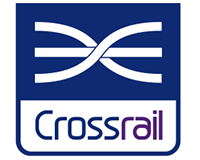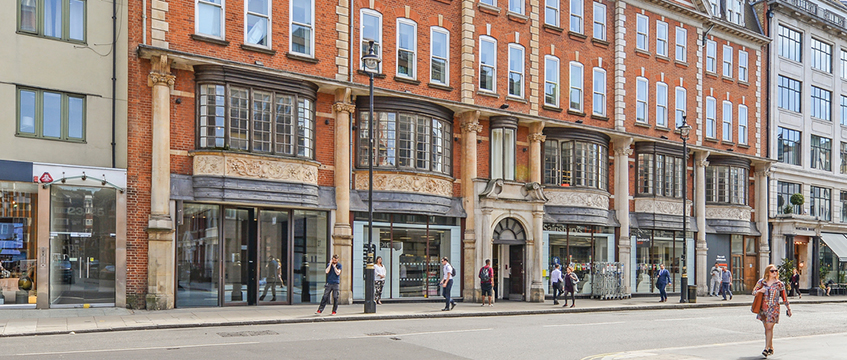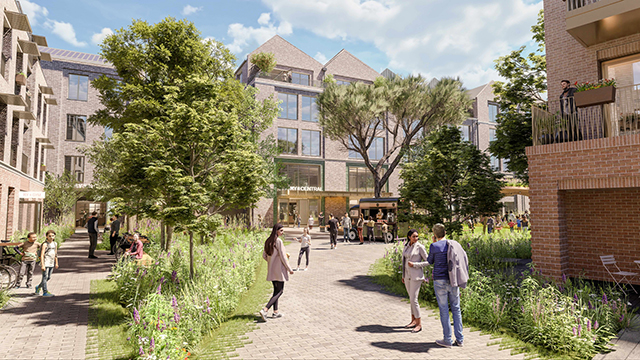With the Crossrail route destined to go through to Thames Valley, the western quadrants of the M25, in particular, are becoming an area of interest for developers, who are piling in with potential opportunities. Nadia Elghamry explores whether this trend could be just the ticket for government housing targets
Housing stats are 10-a-penny, but here’s one that stands out: one in five new homes sold in the capital since 2009 were within a mile of a Crossrail station. It is enough to get any developer drooling. Crossrail has become the new gravy train before a single carriage has left the station.
But unlike the new route, which will pass from Shenfield in the east right through to Thames Valley, developers have one destination in mind: the west.
Hamptons International, which calculated the one in five homes figure, is far from surprised. Head of research Johnny Morris says the infrastructure project has already stimulated a wave of development activity across London which is now spreading to the Thames Valley. “The prospect of new services from Slough, Maidenhead, and the more recent addition of Reading, is focusing attention on potential opportunities in these areas.”
So many are now jumping on board that it is beginning to look like the last dash for a chance to grab a chunk of the final frontier. More homes were permitted in the north-west quadrant of the M25 in the year to the end of June than in both eastern sections added together, or in the whole of Cardiff for that matter, according to EGi’s Planning Research.
Not so for the east. Around the M25, developer interest has been almost 25% stronger in the west than the east. Permissions are over 40% higher in the west.
Drilling down to town level, and Romford, the highest-ranking eastern Crossrail town on our developer hit list, manages a meagre 24th place, with 275 homes applied for in the year to the end of June. By comparison, Greenford in west London is ninth and has more than double the number of homes.
Pointing to the west, managing director of Nexus Planning Roger Tustain says it is just where people want to live, although he admits with a smile that he lives in Ascot. “We have had an undersupply for a number of years, high demand around the South East, and we are just in a period of catch-up.” The problem is some local authorities have been reluctant to allocate sufficient land, he says, and what we have ended up with is a planning by appeal process. “Developers are saying get an application in and we’ll go to appeal, and that means that councils don’t have control over infrastructure or the numbers developed.”
Across the M25 the numbers look big, with more than 26,000 homes applied for and nearly 19,000 permitted over the year as developers sought to cash in on a red hot resi market.
But is it all looking a bit peaky? Alex Greaves, residential fund manager at M&G Real Estate, sees things through income-tinted lenses and he’s not sure he likes what he sees. Like others he is focused on transport networks, looking for pockets where there are still relatively low values on a £ per sq ft basis. “Look at north Acton… it is undervalued and there are other areas within the Crossrail network around the M25 that haven’t got there yet.”
Greaves says values in the wider London area have moved up significantly, making it increasingly ?hard to find value and moving it out of kilter with the long-run equilibrium. “The one we are shorting the most is prime central London resi and that ?puts into context where we see the M25,” he says.
He’s not alone. Duncan Campbell of Campbell Gordon believes the market is in an odd place and there has been a tonal change from the strong demand in the first half of the year. “It’s like before everyone was saying we need to grab everything we can, now it’s more ‘shall we stop for a second?’, it’s more circumspect, now everyone is back from the summer holidays… that could all change though,” he says.
Developers’ interest in the west is no surprise, he adds, with Ascot and Virginia Water still going strong and prices in Maidenhead and Reading boosted by the announcement that Crossrail will stop at both stations, although many locally have been disappointed by the frequency of the service initially, which will see just two trains an hour from Reading.
But, he adds: “I keep hearing from people who say ‘I bid for that, and I put in a bit more and it was really hurting and I still got outbid’.
“Developers have to buy land and they can’t operate and function unless they do that and they have had to really push themselves and gone past their elastic limits, maybe those established players have gone too far.”
And when the professionals start getting outpriced from the market is it time to hunker down? Demand from housing isn’t slowing down, and LSL said last month that the market’s engines were powering down after take-off. With nearly 20,000 units in the M25’s pipeline, let’s hope this is just a short stop-over.
Boom time for Thames Valley?
Is the Thames Valley set for a housing explosion? Current government targets plan 3,060 homes per annum in the Thames Valley. But does that need to triple? Barton Willmore believes numbers will need to rise by as many as 9,000 homes a year to keep track with housing demand.
This figure, says Kim Cohen, partner in the firm’s Reading office, is before any unmet need from London is taken into account.
Housing numbers will need to change drastically over the next 12 months as local authorities look at their strategic housing market assessment. This will force local authorities to look at the wider picture and increase not only housing numbers but also allocate more employment land.
For the Thames Valley, it could get sticky. What’s worse is that some of the south Buckinghamshire counties will now be included in the SHMA. “These are constrained by green belt,” says Cohen. “If these can’t meet their own housing needs, that means more homes will have to be provided by the TV LEP authorities.”
nadia.elghamry@estatesgazette.com











